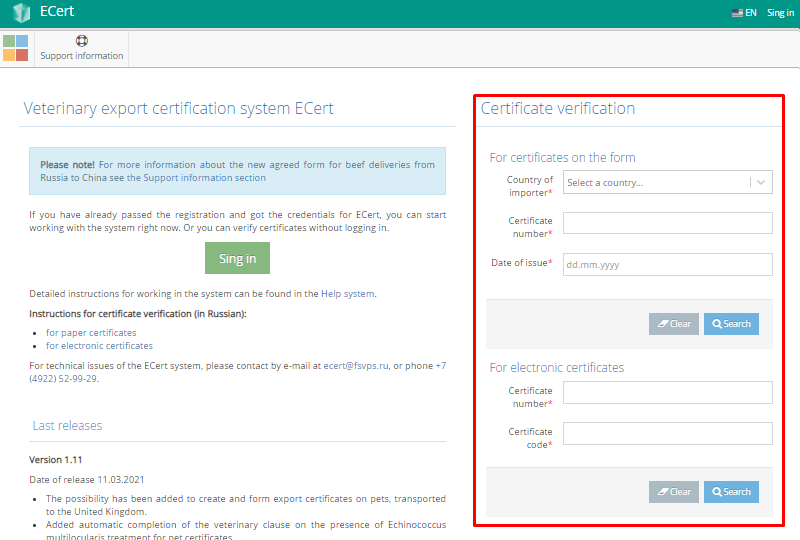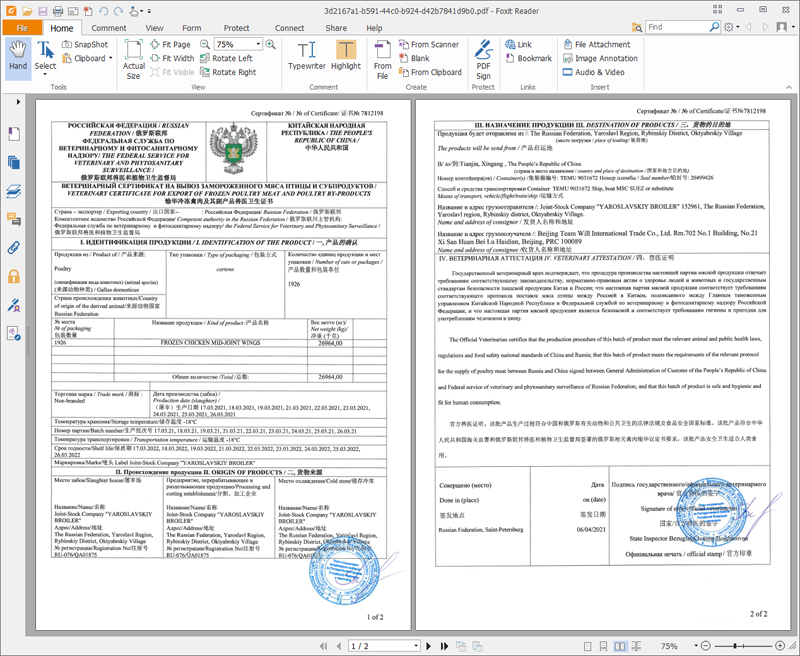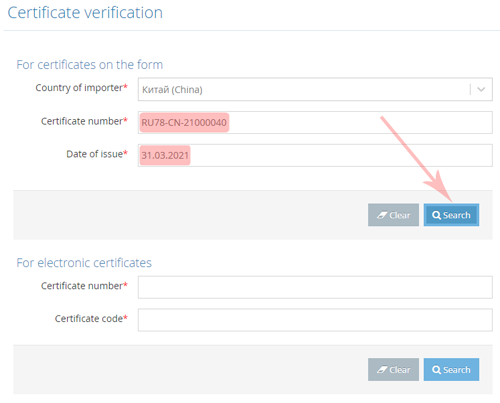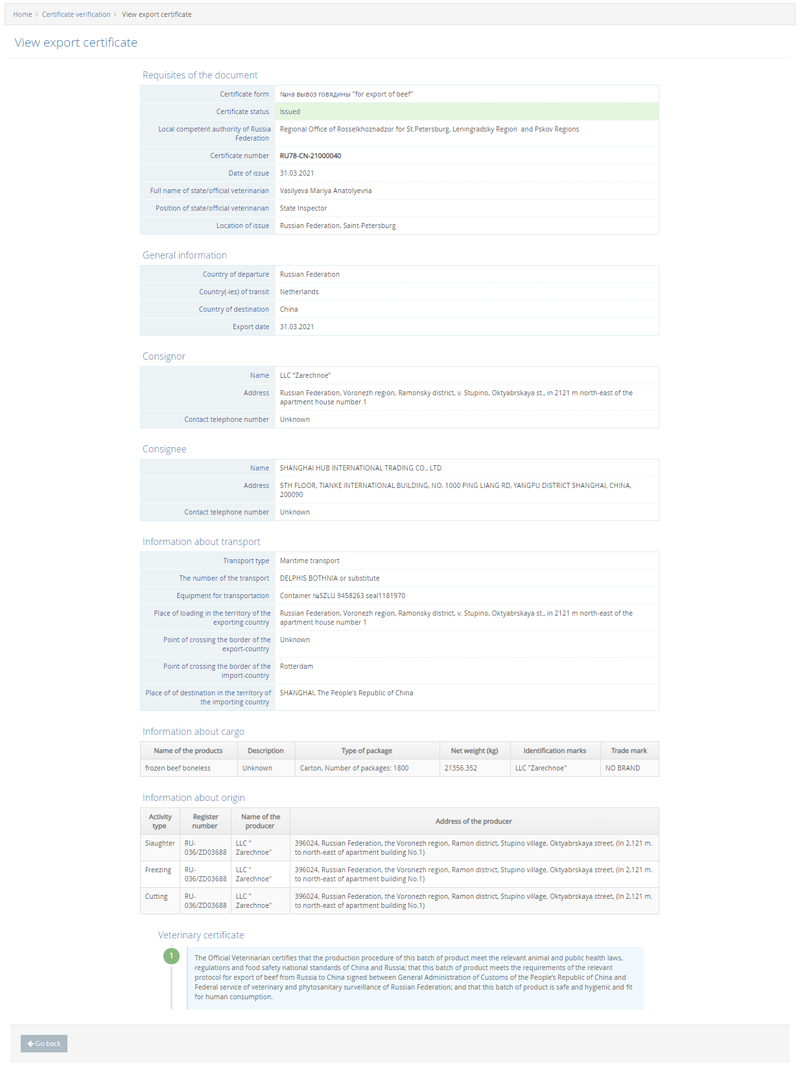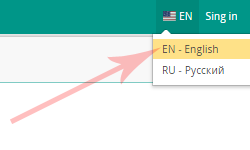Verification of the authenticity of Russian export certificates in the eCert public version
Purpose of the operation
The eCert system is a component of the VetIS Federal State Veterinary Information System and is designed to automate the business processes of import and export electronic certification of regulated commodities.
A QR code is generated for an electronic veterinary certificate issued in the eCert. This QR code contains an encrypted link to the certificate view page directly in the system. You can scan the QR code of the certificate with any reader and get the certificate data online.
The veterinary certificate issued in the paper model as established (paper certificate) is added to the eCert: the certificate data are entered and a scanned copy of the document is uploaded.
Authorized persons of the importing country can use the public version for searching and verifying the authenticity of veterinary certificates issued in the eCert. This version is used to search for and verify both paper and electronic certificates issued in the eCert.
The certificate authentication operation is designed to search for and verify the presence and validity of veterinary certificates issued for products exported from the Russian Federation to foreign countries.
The public version of certificate authentication is available to any unregistered user. It is not required to sign in.
Basic actions
If the printed form of the veterinary certificate accompanying the consignment is marked with a QR code, then scan the QR code of the certificate to verify the authenticity of the electronic certificate.
If you cannot scan the QR code, or if the certificate does not have a QR code, follow the instructions:
- 1. Follow the link: https://ecert.vetrf.ru/.
- As a result, the eCert main page opens (Fig. 1).
- 2. In the certificate authentication public version on the eCert main page you can:
- 2.1. Verify the paper certificate
- by the number and date of registration of the paper certificate.
- 2.2. Verify the electronic certificate
- by the number and code of the electronic certificate.
- 2.1. Verify the paper certificate
Paper certificate verification
To verify the authenticity of the paper certificate follow the steps:
- 2.1.1. Find the certificate number (Fig. 2) and the issue date (Fig. 3) in the paper certificate form.
- 2.1.2. Fill obligatory certificate attributes on page Certificate verification in the section For certificates on the form (Fig. 4):
- select the consignee country from the drop-down list in the field Country of importer;
- input the paper certificate number in the field Certificate number;
- select date of the paper certificate issue in the field Date of issue using calendar.
- Use button Clear to remove data entered in the searching fields.
- 2.1.3. Click button Search to search for a paper certificate by the attributes specified in step 2.1.2 (Fig. 4).
- 2.1.4. Search for the paper certificate will be completed successfully and View certificate page will open when full and correct data are entered (Fig. 5).
- The function of downloading a scanned copy of a paper certificate is available on the View certificate page intended for viewing information about the certificate.
- To do this:
- Click the Download button.
- Save/open the document using the computer.
- The scanned copy of the document is shown in Fig. 6.
- 2.1.5. If the data is entered incorrectly or the certificate with such data is not registered, the system will display the message: “Certificate not found” (Fig. 7).
E-certificate verification
On the printed form of the electronic certificate issued in the eCert system the following data are displayed in the lower left corner (Fig. 8):
- certificate number in the RUXX-XX-XXXXXXXX format, which was assigned to the certificate by the system after it was issued;
- 32-digit unique certificate code;
- issue date;
- QR code, which includes the certificate number, code and issue date.
To verify the authenticity of the electronic veterinary certificate issued in the eCert system, scan the QR code. This will open the page for viewing the certificate directly in the system. Otherwise, follow these steps:
- 2.2.1. On the Certificate verification page, in the For electronic certificates section, specify the obligatory certificate attributes (Fig. 9):
- in the Certificate number field, enter the number of the issued certificate in the RUXX-XX-XXXXXXXX format;
- in the Certificate code field, enter its code in the XXXXXXXX-XXXX-XXXX-XXXX-XXXXXXXXXXXX format.
- To exclude manual entry of electronic certificate attributes and minimize typing errors, we recommend scanning the QR code or use the search by number and registration date, similar to the search for a paper certificate (the procedure is described in paragraph 2.1) (Fig. 9).
- To reset the data entered in the search fields, use the Clear button.
- 2.2.2. Click on the Search button to search for the electronic certificate by the specified attributes (Fig. 10).
- 2.2.3. If the data is entered completely and correctly, the search for the electronic certificate will be completed successfully, and the View export certificate page will open (Fig. 11).
- 2.2.4. If the data is entered incorrectly or the certificate with such data is not issued, the system will issue a message: “Certificate not found”.
Final actions
- If the search is successful following the basic actions, the View certificate page opens, where all the information on export is displayed: document details, information about the consignor and the consignee, information about transport, the consignment, and other information.
- To return to the previous page, click the Go back button. This opens the export certificate verification page, where you can perform the basic actions again.
Exceptional situations
- When the basic actions are performed and the eCert displays the message “Certificate not found”, it means that the certificate with the attributes entered during the search was not found in the system registry. Check the correctness of the parameters entered and search for the certificate again.
- The system automatically displays information in English, when you go to the main page of the eCert. If the information is displayed in Russian after going to the main page, you can manually change the layout to English in the upper right corner (Fig. 12).
- For technical questions related to work in the eCert component, you can contact us by e-mail ✉: ecert@fsvps.ru.
References
- https://ecert.vetrf.ru – the eCert home page with a public certificate authentication form.
